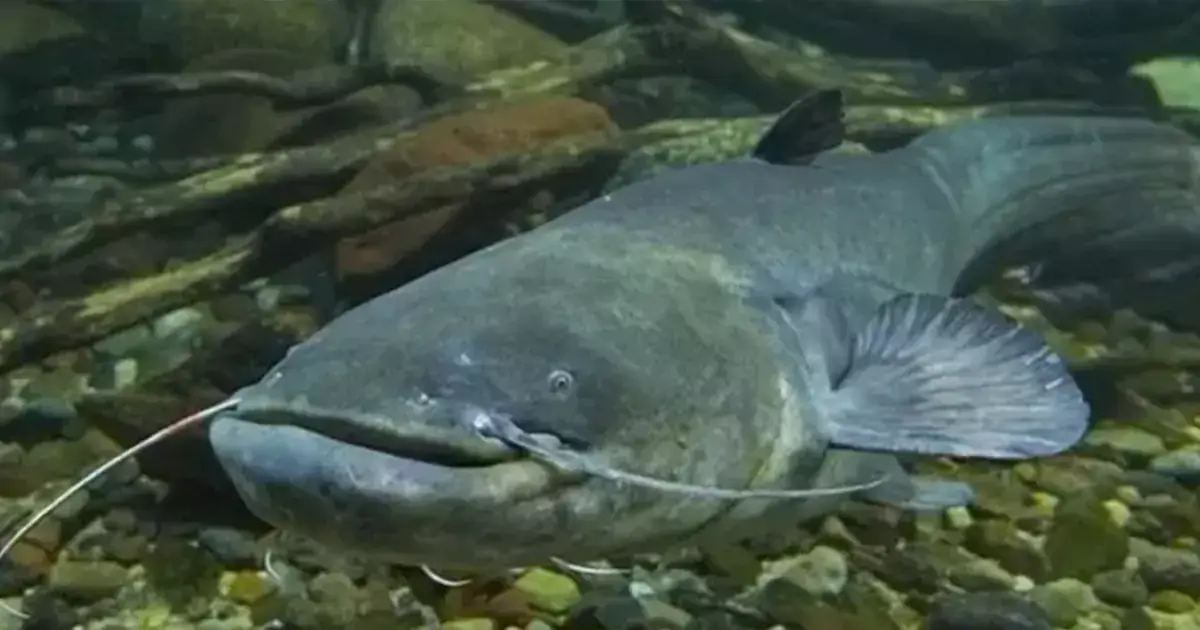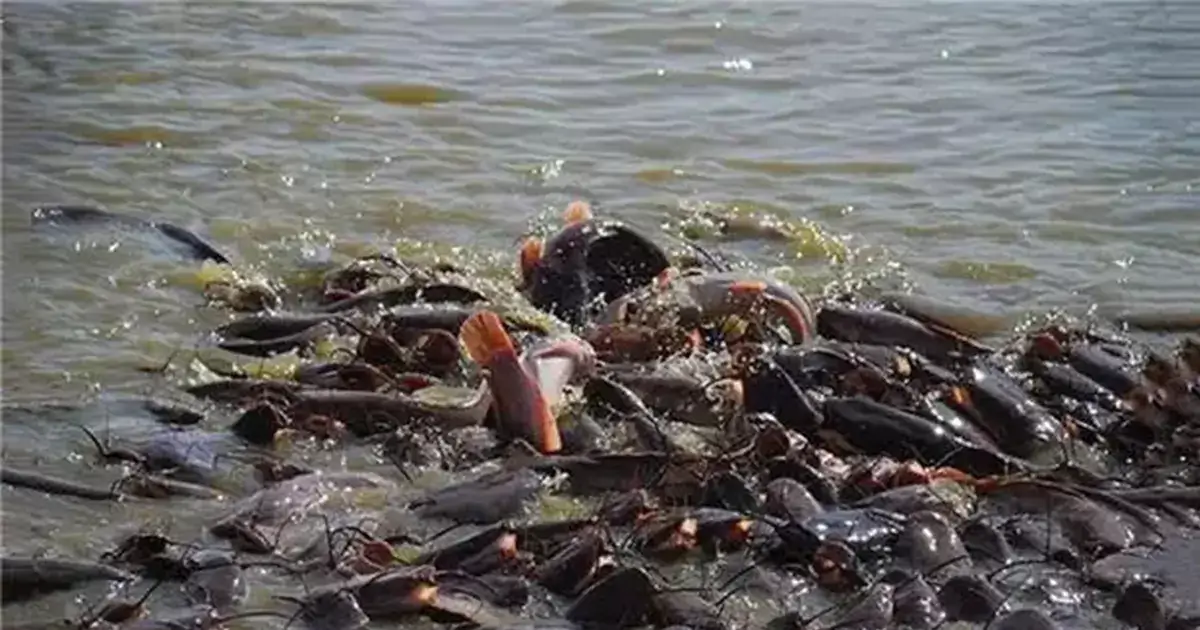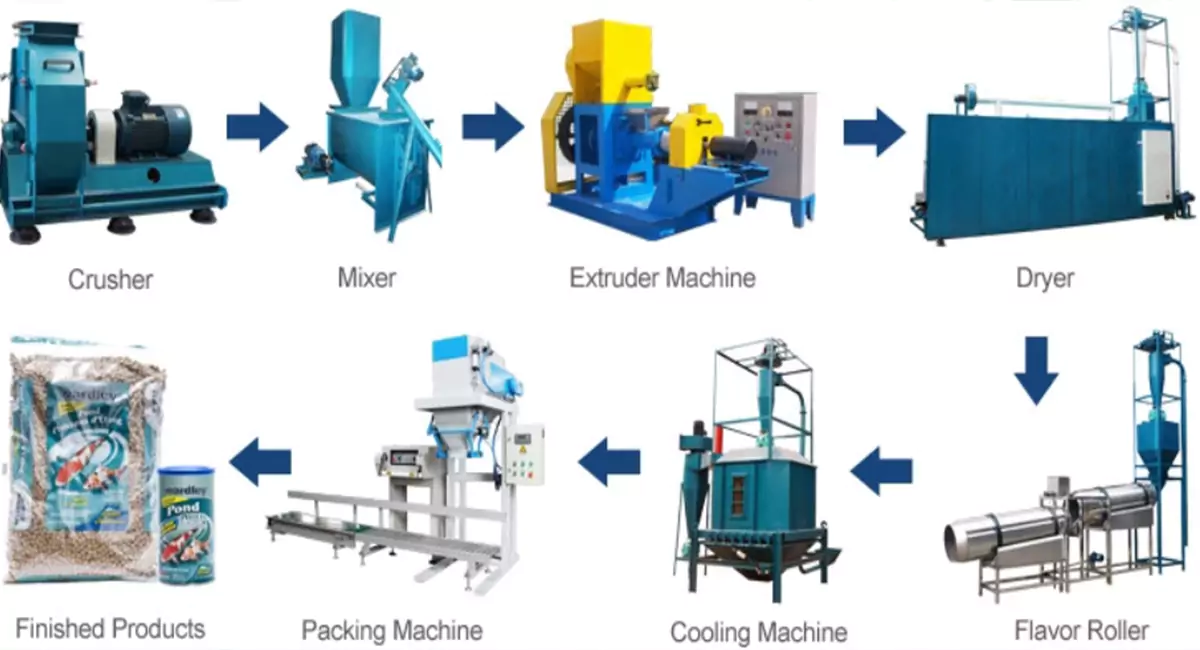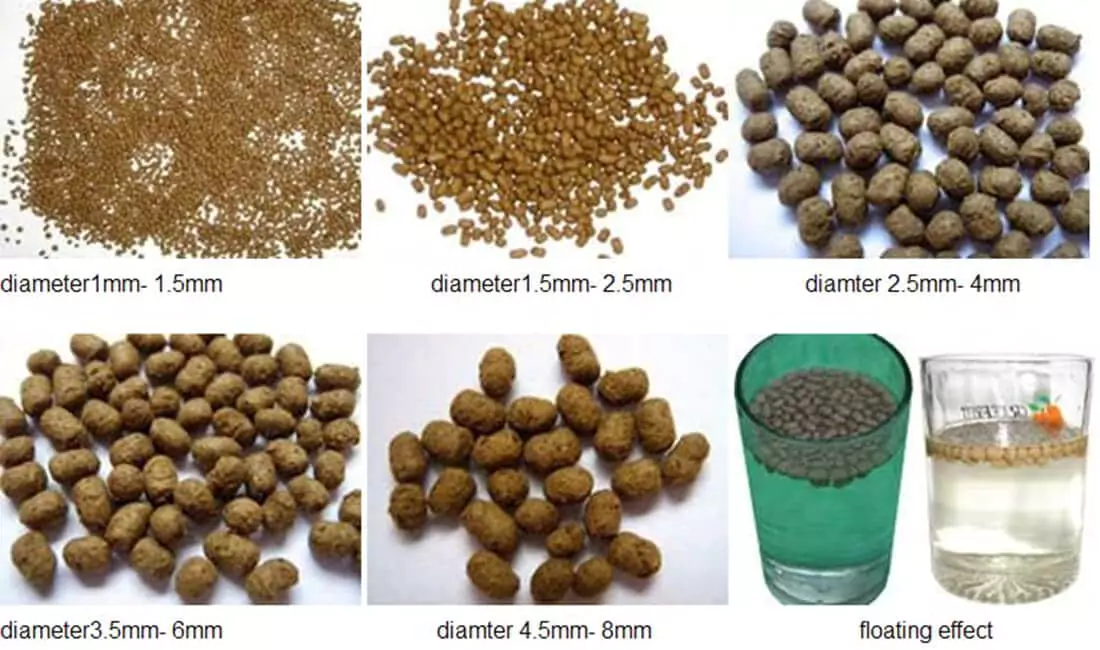Introduction
Ask any catfish farmer what their biggest regular expense is, and they’ll likely say “feed.” It’s true – feed costs can take a big bite out of your profits. Plus, with commercial feed, you’re not always 100% sure about the quality or how fresh it really is. But what if you could change that? Making your own catfish feed puts you in the driver’s seat. You control the ingredients, the quality, and the cost.
This guide isn’t just a list of ingredients. We’ll walk you through the “why” and the “how” – from understanding what your catfish really need to grow big and healthy, to choosing the right ingredients, crafting a good recipe, and the actual steps of turning those ingredients into feed pellets. Think of this as solid advice, like you’d get from one farmer to another who’s been there and done that.

Why Bother Making Your Own Catfish Feed? The Real Wins
Taking the step to make your own catfish feed might seem like extra work, but the payoffs can be huge for your farm.
Slash Your Feed Costs (Seriously!)
This is usually the number one reason farmers start. Buying raw ingredients like corn, soybean meal, and fish meal in bulk is almost always cheaper – often much cheaper – than buying finished, bagged feed from a store. Those savings go straight to your bottom line, and they add up fast.
You Control What Goes In (Nutrition Tailored to YOUR Fish)
When you make it yourself, you know exactly what your fish are eating. That means no mystery fillers or ingredients you’re not sure about. You can create specific feed formulas tailored to the different growth stages of your catfish – from tiny fry to hefty growers and even your important broodstock. This means your fish get exactly what they need, when they need it.
Fresher Feed = Healthier, Happier Catfish
Think about it: feed made on your farm is as fresh as it gets. Fresh feed usually tastes better to the fish, so they eat it more eagerly. More importantly, it holds onto its nutrients, especially sensitive vitamins, much better than feed that’s been bagged and stored for weeks or months. Fresher feed means healthier fish.
Less Waste, Cleaner Water (When You Get It Right)
Good quality, well-made pellets are eaten more completely by your fish. If you choose to make floating pellets, you can easily see how much is being eaten. This means less uneaten feed dissolves in your pond, which helps keep your water cleaner. And cleaner water means healthier fish too.

What Your Catfish Really Need: Nutrition Basics 101
Before you can make good catfish feed, you need to know what good feed is made of. Here are the basics for catfish:
Protein: The Muscle Builder
This is job number one for growing big, healthy catfish. Young catfish (fry and fingerlings) need a lot of protein, often around 40-45% of their diet. As they get bigger (growers), this can usually come down to about 28-32%. Your breeding fish (broodstock) also have specific protein needs to stay healthy and produce good eggs.
Energy (from Carbs & Fats): Fuel for Growth and Activity
Catfish need energy to swim, grow, and just live their lives. This energy mainly comes from carbohydrates (like from corn or rice bran) and fats or oils in their diet.
Essential Fats (Lipids): For Health and Energy Storage
Good quality fats are important. They provide a concentrated source of energy and help your fish absorb certain vitamins. Some fatty acids are “essential,” meaning the fish can’t make them and must get them from their food.
Vitamins & Minerals: The Spark Plugs for a Healthy Fish
Just like us, catfish need a whole range of vitamins and minerals for everything from strong bones to fighting off diseases. It’s usually easiest and best to add a good “vitamin and mineral premix” specifically made for fish or catfish to your feed recipe. Trying to add these one by one is tricky and can lead to problems.
Nutritional Formulation for Growing Catfish
| Ingredient | Percentage (%) |
|---|---|
| Fish Meal | 28 |
| Soybean Meal | 20 |
| Corn Meal | 15 |
| Wheat Middlings | 15 |
| Rice Bran | 10 |
| Fish Oil | 4 |
| Vitamin & Mineral Premix | 5 |
| Dicalcium Phosphate | 2 |
| Limestone | 1 |
Gathering Your Catfish Feed Ingredients
Here are some common ingredients you might use to make your catfish feed:
Common Energy Sources (The Base of Your Mix):
Corn (maize) meal, rice bran, wheat middlings or bran, sorghum meal.
Key Protein Sources (Building Blocks for Growth):
Soybean meal (a real workhorse ingredient!), fish meal (excellent quality, but try to use it from sustainable sources and keep an eye on the cost), cottonseed meal (important: for some fish, you need to be careful about something called gossypol in cottonseed meal, so check if it’s safe for your catfish or use low-gossypol types), poultry by-product meal.
Fats/Oils (For Extra Energy & Taste):
Fish oil (great for catfish!), soybean oil, poultry fat.
Binders (To Hold Pellets Together):
Wheat flour, cassava starch, or other specialized feed binders help your pellets stay firm and not crumble.
The All-Important Vitamin & Mineral Premix:
Don’t skip this! Choose one that’s formulated for catfish or general aquaculture needs.
(Optional but Good) Attractants or Health Boosters:
Some farmers like to add things like yeast (for B-vitamins and gut health), a little garlic powder (for taste), or probiotics (good bacteria for the gut).

The Tools of the Trade: Equipment You’ll Likely Need
To make catfish feed pellets, you’ll need some machinery:
The Grinder (Hammer Mill):
This turns your dry catfish feed ingredients into a fine, even powder. This powder is key for good mixing and for making quality pellets.
The Mixer (Horizontal or Vertical):
This fish feed mixer machine makes sure every single ingredient, especially the tiny amounts of vitamins and minerals from your premix, is perfectly blended throughout the feed.
Pellet Mill:
This type of machine is sinking fish feed machine which usually makes dense pellets that sink. It’s a common choice for some catfish feeding strategies.
Feed Extruder:
This machine is floating fish feed extruder which cooks the feed under pressure and makes lighter pellets that often float. Many catfish farmers prefer floating feed pellets because you can easily see the fish eating.
The Dryer:
Fresh pellets, especially from an extruder, are hot and moist. A dryer uses warm air to reduce the moisture so the pellets can be stored safely without molding.
(Optional but Helpful) Cooler, Sifter, Oil Coater:
A cooler brings hot pellets to room temperature. A sifter removes dust and wrong-sized pellets. An oil coater can add extra fats or attractants after pellets are made.
The Catfish Feed Making Process: From Powder to Pellet (Step-by-Step)
Making the feed itself is a straightforward process once you have your recipe and equipment.
Measure & Weigh Your Ingredients Carefully:
This is where your recipe starts. Precision matters for balanced nutrition!
Grind Your Dry Ingredients:
Get everything to a consistent, fine powder. Think coarse flour.
Mix It All Up:
Add all your ground ingredients and your vitamin/mineral premix to your mixer. Blend it thoroughly for the recommended time (usually a few minutes) to get an even mix.
Add Moisture (Conditioning):
This step is crucial for good pellets. For most pellet mills and extruders, you’ll need to add a controlled amount of water or, even better, steam to the dry mix. This helps the ingredients stick together and, in an extruder, helps cook the feed.
Pelletize or Extrude:
Feed your conditioned mixture into your pellet machine. You’ll need to adjust the settings as you go to get good quality pellets coming out.
Dry & Cool (If Necessary):
Pellets coming from an extruder always need to be dried to less than 10% moisture. Some pellets made in a pellet mill might also benefit from some drying, especially if you added a bit more water. After drying, let them cool completely to room temperature.
The “Feel Test” (An Insider Tip):
“Once your pellets are cooled, you’ll get a feel for good quality. Good sinking catfish feed pellets should feel firm and break with a clean snap. Floating pellets should be light but still hold their shape well. With a bit of practice, you’ll know just by handling them if you’ve got it right, much like checking if your chapati or ugali dough has the right consistency.”

Insider Tips for Top-Notch Homemade Catfish Feed
Here’s some advice that often comes with experience:
Start Small & Test Your Batches.
Don’t go making a mountain of feed with a brand-new recipe. Make a small batch first. See how your fish react to it. See if they eat it well and if it holds up in the water.
Water Stability is Your Friend.
You don’t want your pellets turning to mush the moment they hit the water, especially if you’re making sinking feed. They need to stay intact long enough for your catfish to find and eat them. The conditioning step helps a lot with this.
Watch Your Fish – They’re Your Best Critics!
Are they rushing for the feed when you put it in? Do they look lively and healthy? Are they growing well? Your fish are the ultimate judges of your feed quality.
Safety First, Always!
“Listen, these grinders and pellet machines are powerful tools, not toys. They demand respect. I’ve heard stories, and you definitely don’t want to become one of those cautionary tales. Always, always follow the safety instructions. Keep your hands and loose clothing clear of any moving parts. Wear the proper safety gear. There are no shortcuts when it comes to your well-being on the farm.”
Storing Your Feed to Keep it Fresh & Safe
You’ve made good feed; now keep it that way.
- Store your finished pellets in a cool, dry place. Moisture is your enemy here; it leads to mold.
- Use airtight containers if you can, or at least well-sealed bags.
- Protect your feed from rats, mice, and insects. A clean, secure storage area is key.
- Label your feed with the date it was made. Try to use the oldest feed first (this is often called “First-In, First-Out” or FIFO).
FAQ About Making Catfish Feed
1. How much protein do catfish really need in their feed?
It really does vary by their age and size. Young catfish fry need very high protein, often around 40-45%, for that fast initial growth. As they grow into fingerlings and then larger fish ready for market (growers), the protein level in their feed can usually be lowered to around 28-32%. Your breeding catfish (broodstock) also have specific protein and fat needs to keep them healthy and productive.
2. Floating or sinking pellets – which is truly better for catfish?
Many commercial catfish operations today prefer floating feed pellets. The main reason is that it’s much easier to see the fish eating at the surface. This helps you judge how much feed is being consumed and if you are over or underfeeding. It can also help reduce water pollution from uneaten feed. However, catfish are quite adaptable and will readily eat sinking feed pellets too. The best choice can sometimes depend on your specific farm setup and your management style.
3. How long will my homemade catfish feed last if stored properly?
If you have dried your pellets correctly (to around 10-12% moisture content) and you store them in a cool, dry, clean, and pest-free place, they should last well for several weeks. Some farmers might store them for a couple of months. However, to ensure maximum freshness and nutrient quality, it’s often best to make feed in smaller batches more frequently if you can, rather than storing huge amounts for a very long time.
Conclusion
Making your own catfish feed takes some effort, planning, and a bit of learning. But the rewards can be huge for your farm. You gain control over your single biggest cost. You can provide tailor-made, high-quality nutrition for your fish. And you get the satisfaction of knowing exactly what they’re eating.
Start simple, learn as you go, and don’t ever be afraid to ask for expert help from nutritionists or other experienced farmers. Your catfish (and your wallet) will almost certainly thank you for it!
